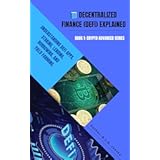The United States faces an unprecedented financial challenge, with its national debt soaring to an astounding $37 trillion. To grasp the sheer scale of this figure, it’s equivalent to nine trips to the moon if you were to stack a trillion dollars end-to-end. This monumental burden is not merely an abstract number; it significantly impacts every American taxpayer, as a substantial portion of tax revenue is now allocated simply to servicing the interest on this ever-growing debt. As the video above eloquently explains, the traditional method of “paying off” debt, much like a personal credit card bill, is no longer a viable solution for a sum of this magnitude. This economic reality has spurred policymakers to seek unconventional strategies, with former President Trump and his team reportedly exploring radical “debt reset” solutions that involve gold and cryptocurrency.
The implications of such a fundamental shift could be profound, potentially altering the very fabric of our financial system and resetting everything from national debt cycles to asset prices and personal savings. The concept of introducing new forms of currency, particularly in the digital realm, marks a pivotal moment in economic history, promising to redefine wealth transfer across generations. As we delve deeper into these intricate proposals, we aim to demystify them, providing a clear understanding of the mechanisms at play and their potential impact on the average American. The current trajectory suggests continued fiscal unsustainability, demanding innovative and perhaps controversial approaches to navigate the looming financial future.
The Escalating US National Debt Challenge
The growth of the **US national debt** is a critical issue that demands immediate attention from policymakers and citizens alike. Government spending consistently outpaces revenue, creating substantial deficits that are automatically added to the national debt. For instance, projections for 2025 indicate that the government is expected to spend nearly $7 trillion while only bringing in approximately $5 trillion in revenue. This leaves a staggering $2 trillion shortfall that will further inflate the national debt, pushing it from $37 trillion closer to $40 trillion, akin to adding yet another “trip to the moon” in debt. This persistent imbalance highlights a systemic issue where fiscal discipline often takes a back seat to extensive government programs and expenditures.
The analogy to a credit card bill remains starkly accurate: a larger balance inevitably leads to higher interest payments, making it progressively harder to reduce the principal. Furthermore, the Federal Reserve’s monetary policy, particularly its decision to maintain elevated interest rates, exacerbates this problem. By keeping rates high, the cost of borrowing for the government increases, widening the gap between tax dollars collected and tax dollars spent on servicing the debt. This scenario creates a vicious cycle, where the interest payments consume an ever-larger share of the budget, leaving less for essential services and infrastructure investments. Consequently, the national debt spirals upwards, creating long-term economic instability.
Understanding the Mechanics of Debt and Inflation
The perpetual funding of this growing debt often falls to the Federal Reserve, which, unlike a typical bank, possesses the unique ability to create new money. When the government needs to cover its deficits, the Fed frequently intervenes by printing more cash. While this action may not appear as a direct tax on an individual’s paycheck, its effects are felt insidiously through inflation. Every new dollar printed by the Federal Reserve effectively dilutes the value of existing dollars in circulation. This fundamental economic principle explains why the purchasing power of your money diminishes over time, leading to higher prices for everyday goods and services.
The phenomenon of inflation, a direct consequence of increased money supply, creates a significant and often unseen tax on the American public. A dramatic statistic reveals that four out of every ten dollars in circulation have been printed since 2020, demonstrating the extent of recent monetary expansion. This influx of new money into the economy is a primary driver behind the substantial rise in asset prices and the cost of living observed in recent years. While the immediate impact might not be visible on a pay stub, its effect is undeniable when purchasing groceries or filling up a gas tank. Understanding this mechanism is crucial for comprehending the urgency behind calls for a **debt reset** and alternative economic strategies.
Examining Trump’s Debt Reset Proposals
Recognizing the unsustainability of the current economic trajectory, various strategies are being explored to address the national debt crisis. Among these, former President Trump’s team has reportedly considered several innovative, albeit controversial, approaches to fundamentally reset the national debt landscape. These proposals aim to either drastically reduce the perceived debt burden or expand the money supply without incurring additional liabilities, moving beyond traditional fiat currency solutions. The core of these ideas involves leveraging existing assets and modern digital technologies in novel ways. Three prominent ideas are gold re-valuation, the establishment of a Bitcoin reserve, and the implementation of asset-backed stablecoins through the “Genius Act.”
These forward-thinking concepts challenge conventional economic wisdom, suggesting a departure from the post-gold standard era that began in 1971 under President Nixon. The move away from the gold standard granted governments greater flexibility in printing money but also opened the door to inflationary tactics to manage debt. Trump’s proposed solutions represent a significant pivot, exploring mechanisms that could potentially re-anchor the dollar’s value to tangible assets or cutting-edge digital currencies. The outcome of such measures could redefine the global financial architecture and the role of the US dollar on the international stage, making these proposals a subject of intense debate and speculation among economists and investors alike.
Gold Re-valuation: A Historical Precedent
One of the intriguing proposals for a **debt reset** involves re-valuing the United States’ substantial gold reserves. The US Treasury currently holds approximately 261 million ounces of pure gold. However, on official books, this gold is still recorded at an archaic valuation of about $42 per ounce, amounting to a mere $11 billion. This figure pales in comparison to the current market price of gold, which trades closer to $3,300 per ounce. If the government were to re-value its gold at this modern market price, the same 261 million ounces would instantly be worth approximately $860 billion. This re-valuation would, in effect, create an additional $849 billion on the government’s balance sheet, seemingly out of thin air, without selling any physical gold.
The mechanics of this re-valuation are surprisingly straightforward: the government would issue a certificate to the Federal Reserve stating the new, higher value of its gold holdings. In return, the Fed could provide the Treasury with a corresponding amount in cash, perhaps $800 billion, which the government could then spend without incurring new debt. This strategy has a historical precedent; in 1934, President Franklin D. Roosevelt re-valued gold from $20 to $35 an ounce during the Great Depression. This move provided the government with billions in new spending power, which was instrumental in stimulating economic recovery. However, relying on gold re-valuation also carries inherent risks, as a significant drop in gold prices could weaken the government’s balance sheet and undermine perceived economic strength, making this a delicate balancing act for any **Trump debt reset plan**.
The Bitcoin Reserve Strategy: Modernizing Treasury Holdings
Moving into the digital age, another groundbreaking aspect of a potential **Trump debt reset plan** involves establishing a Bitcoin reserve strategy. Unlike traditional approaches, this plan doesn’t envision the US government purchasing Bitcoin on open exchanges. Instead, it proposes a shrewd method of accumulating this digital asset: seizing it from criminal enterprises. US law enforcement agencies frequently confiscate vast amounts of Bitcoin and other cryptocurrencies from individuals involved in illicit activities, such as drug cartels like the Sinaloa Cartel and its leaders, El Chapo and El Mayo. These seized digital assets are then transferred to secure cold wallets, effectively becoming government holdings.
Estimates suggest that the government has already seized anywhere from 30,000 to 200,000 Bitcoins. At a hypothetical value of $100,000 per coin, this could represent a value ranging from $3 billion to $20 billion. Similar to the gold re-valuation concept, these Bitcoin holdings could be pledged to the Federal Reserve and re-valued at their market price, generating new dollars for government spending without adding to the national debt. Historically, the US has tended to sell off seized Bitcoin, a practice that led to missing out on significant gains as Bitcoin’s value surged, amounting to an estimated $17 billion in lost revenue. By adopting a “hold” strategy, the government would be betting on Bitcoin’s long-term appreciation to strengthen its balance sheet. However, this strategy is not without its risks; a substantial crash in Bitcoin’s value could similarly destabilize the Fed’s backing and significantly diminish the value of these governmental assets.
The Genius Act: Stablecoins and Asset-Backed Currency
Perhaps the most audacious proposal for a **debt reset** is the “Genius Act,” reportedly signed in 2025 by Trump, which aims to regulate stablecoins. This legislation goes beyond mere regulation, allowing the US government to create its own stablecoins, pegged to tangible assets like gold or Bitcoin. These US-backed crypto coins could then circulate as alternative forms of currency to the traditional US dollar. Imagine a digital dollar directly tied to a specified quantity of gold or Bitcoin, rather than simply being printed from thin air. Such an innovation could dramatically expand the money supply without simultaneously increasing the national debt, offering a powerful tool for fiscal management.
The promise of asset-backed stablecoins is their potential to restore trust in currency by grounding its value in real-world assets, thus mitigating inflationary pressures associated with fiat currency. However, this bold approach is fraught with significant risks. The primary concern revolves around the stability of the underlying assets. What if the value of gold plummets, or Bitcoin experiences a catastrophic crash? Such scenarios could severely undermine the stablecoin’s value, leading to a loss of public confidence and potentially jeopardizing the global standing of the US dollar. The move could be a strategic gambit, potentially devaluing gold worldwide and strengthening the US by making Bitcoin the dominant reserve, effectively checkmating economies like China and Russia tied heavily to gold. Yet, the volatility inherent in both gold and especially Bitcoin makes this an incredibly high-stakes proposition for the future of the **US national debt** and global finance.
Risks and Implications for the Dollar’s Future
While these **Trump debt reset** proposals offer innovative solutions to the national debt crisis, they are not without significant inherent risks. Each strategy, whether involving gold re-valuation, a Bitcoin reserve, or asset-backed stablecoins, ties the stability of the US financial system to external entities and volatile asset markets. A sudden and severe drop in the price of gold or a major crash in Bitcoin’s value could severely undermine the perceived wealth and stability created by these measures. This dependence on market fluctuations introduces a new layer of vulnerability to the US dollar’s position, which is already under scrutiny as it slowly begins to lose its position as the world’s primary reserve currency.
The erosion of trust in the US dollar is a central concern. Historically, the dollar’s strength was bolstered by its convertibility to gold, a system that President Nixon famously dismantled in 1971. This decision, prompted by other nations (like France) seeking to exchange their dollars for gold, granted the Treasury the power to print money without a physical constraint, using inflation as a covert tax to diminish debt over time. What began as a temporary solution has become standard practice, leading to the current inflationary environment where four out of every ten dollars in circulation were printed since 2020. Should confidence in the dollar completely falter due to excessive printing or the failure of these new asset-backed strategies, its global reserve status could irrevocably be lost. This would have catastrophic implications, diminishing American economic influence and making imports more expensive, severely impacting everyday citizens and the broader global economy.
Protecting Personal Wealth in an Evolving Economy
In an economic landscape increasingly shaped by national debt, inflationary pressures, and unconventional government strategies, protecting personal wealth has become a paramount concern for “regular folks.” The reality of inflation acting as a hidden tax, silently eroding purchasing power, means that passive savings in traditional bank accounts may not suffice for long-term financial security. While specific financial advice is outside the scope of this discussion, understanding these macro-economic trends can inform personal financial decisions. Diversification across various asset classes is often cited as a key strategy to mitigate the risks associated with government-induced inflation and market volatility.
Individuals might consider allocating assets across different sectors, such as real estate, the stock market, and even emerging digital assets like cryptocurrencies, as mentioned in the video. This approach aims to spread risk and potentially capitalize on different market dynamics. For example, real estate can act as a hedge against inflation, while strategic stock market investments can offer growth potential. Furthermore, a small, carefully considered allocation to cryptocurrencies like Bitcoin might be viewed by some as a defense against the devaluation of fiat currency. While the challenges of saving and investing in today’s economy are immense, especially for those struggling to build an emergency fund, staying informed and proactively exploring various financial avenues is crucial. It’s imperative to engage with these discussions, understand the implications of the **Trump’s Debt Reset Plan**, and consider personal strategies to safeguard financial futures for ourselves and future generations.







